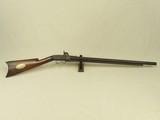 |
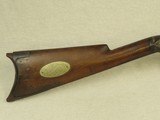 |
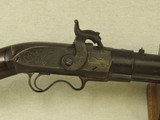 |
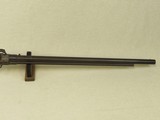 |
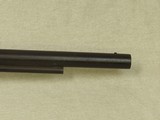 |
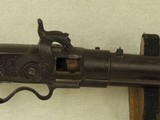 |
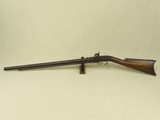 |
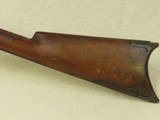 |
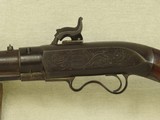 |
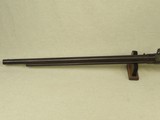 |
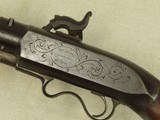 |
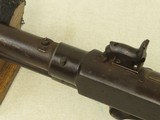 |
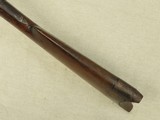 |
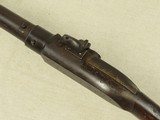 |
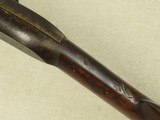 |
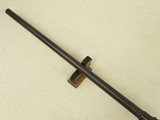 |
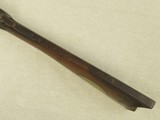 |
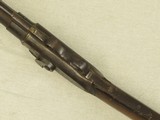 |
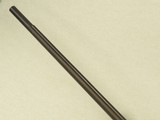 |
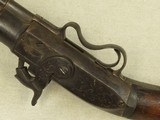 |
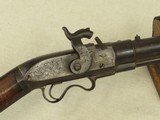 |
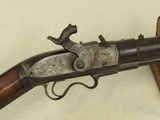 |
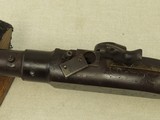 |
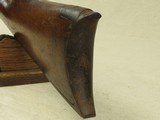 |
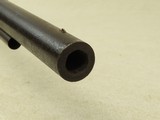 |

1852 Vintage Robbins & Lawrence Jennings Factory Muzzle-Loading Rifle ** Super Rare Winchester Predecessor **SOLD**
Guns International #: 101720273 Seller's Inventory #: CBP20-273
Category: Antique Rifles - Percussion - Winchester Rifles - Antique Single Shot
Seller's Information
When emailing or calling sellers direct, please mention that you saw their listing on GunsInternational.com
Seller: Antique & Modern Firearms, Inc.
Company: Antique & Modern Firearms, Inc.
Member Since: 4/27/15
State: Kentucky
Zip: 40503
Country: United States
Phone: (859) 276-1419
Fax: (859) 278-0838
Platinum Seller
Number of Active Listings: 168
Total Number of Listings: 14934
Seller: FFL Dealer
Return Policy: 3 day inspection and return policy on used guns.
Payment Types Accepted: Visa,Master Card, Discover,Check
Description:
We are excited to offer this very rare gun, considered a predecessor arm to the formation of the famous Winchester company. This is a 100% original Robbins & Lawrence-made Jennings Factory Muzzle-Loading rifle in .54 caliber, made for only one year in 1852. The story on how this rifle came to exist is an interesting one. The very first "Winchester" made was the Hunt Repeating rifle in 1847-48. Designed by Walter Hunt, the Hunt rifle used "Rocket Ball" cartridges (also invented by Hunt), a hollow-based bullet with the powder packed inside and backed by a pierced disc that permitted ignition from a seperate priming device. Only a handful at most were ever made, and there are no records of commercial sales. (There is only one original example known of this rifle in existence today and it resides in the Winchester Museum collection.) An American gunsmith, Lewis Jennings, took the Hunt design and improved it to create the Jennings Repeating Rifle in 1848. The Jennings design used Hunt's "Rocket Ball" ammunition, a tubular magazine under the barrel, a ring trigger to cycle the action, and a pill priming system. The Robbins & Lawrence firm in Windsor, Vermont contracted with Jennings to build 5000 of his rifles in late 1848. The foreman for this project was B. Tyler Henry, who would later play a major role in the development of the rifle and ammunition for the Volcanic, New Haven, and Winchester Arms companies. In trying to build and perfect the Jennings Repeater the talents of Henry, Horace Smith, and Daniel Wesson were brought together at Robbins & Lawrence, which would ultimately be very important for the later development of lever-action repeaters. As far as the Jennings Repeater went, it appears that only a handful of them were made for testing and evaluation which revealed that the design had too many problems to be reliable. At this point the Jennings rifle was redesigned as a breech-loader, but still used the Rocket Ball ammunition and pill primers. The company was able to use many of the Jennings Repeater parts and built these from 1850 to 1851. This rifle worked by loading the Rocket Ball ammo thru a port on the right side of the receiver and then cycling the ring trigger to close the breech and prime the rifle with a pill primer. The hammer was cocked manually and the ring trigger was pulled fully to the rear to fire the rifle. What used to be the tubular magazine under the barrel was made much smaller and blocked off at the receiver to hold a cleaning rod. While the breechloading design worked well it was found that the Rocket Ball ammunition was too weak for military or hunting purposes. This was the primary reason for it's lack of success, and as a result only a small number of these were built. By 1852 Robbins & Lawrence still had a number of parts for the Jennings rifle but lacked a design that was commercially viable. It was at this point that they decided to build a muzzle-loading model of the Jennings rifle using converted breech-loading rifle parts. The breech-end of the barrel was plugged, the ring trigger was cut and altered to a spur trigger, the triggerguard was indented with a bow to restrict travel, the striking pin on the hammer face was ground flush, and a percussion nipple was fitted on top of the frame. With these changes they were able to simplify the Jennings to a basic .54 caliber cap and ball muzzle-loader, a weapon that everyone was familiar with at that time. Robbins & Lawrence would use up all of the parts they had before 1852 was over. It is estimated today that despite having a contract for 5000 Jennings rifles, less than 1000 total rifles were made between all three variations. This particular example is serial number 625 and it appears to be 100% original in every way. As you can see from the pictures, it has a heavily aged brown patina to it that is uniform on all of the parts. This Factory Muzzle-Loading Rifle still has a working action on it, although the trigger wants to stick a little once fired and has to be pushed back to the forward position. The hammer still has both the half-cock and full-cock notches intact and a strong mainspring. You can still make out all of the factory floral scroll engraving on the receiver, and the left side is marked with the patent date "Patent 1849" (which is upside down for some reason) over "C. P. Dixon Agent New York" in an oval shaped area bordered by engraving. The front of the triggerguard is stamped "625", and the barrel is stamped "625" as well just ahead of where it meets the receiver. The unused breech access door still snaps open and closed on the right side of the receiver, left over from when it was designed to be a breech loader. There is also a port door that swings open under the hammer; yet another left-over feature from the original breech-loading design. The bore in this Jennings is in surprisingly good condition overall. The rifling is still very well-defined and strong throughout the barrel, showing just minor pitting mainly in the grooves and no major damage/bulges. The original factory sights are still in good shape on this rifle. The rear sight is a tiny little forked prong attached to a dovetailed base and the front sight is a tiny brass blade inlaid into the barrel steel. The original stock on this rifle is in good condition overall as well, with the worst damage consisting of a couple of small chips of wood missing from the lower wrist on either side of the lower tang. There are no cracks in the buttstock and it is tight to the gun with no wiggle. All of the original stock hardware is still intact and in-place including the silver name plate on the right side of the butt, and the original steel crescent-style buttplate. The buttplate has protective "tang" extensions on both the top and bottom of the stock to protect the wood. All in all, this is one of the most interesting, historically important, and rare weapons we have had in a long time. There can't be more than a handful of these factory-built Jennings Muzzle-Loaders in existence today in any condition, much less all-original like this one. This rifle would be a very important addition to any antique American weapons collection and/or antique Winchester collection.
SOLD
Antique: Yes
Rifle Caliber: .54
Manufacturer: Robbins & Lawrence (Windsor, Vermont)
Model: Jennings Muzzle-Loading Rifle (Factory)
Serial Number: 625
Barrel Length: 26" Inches
Condition: Good
Metal Condition: Good / Average
Wood Condition: Good / Average
Bore Condition: Average / Good
Action: Single Shot Muzzle-Loader
Sights: Fixed Iron Sights
Manufacture Date: 1852